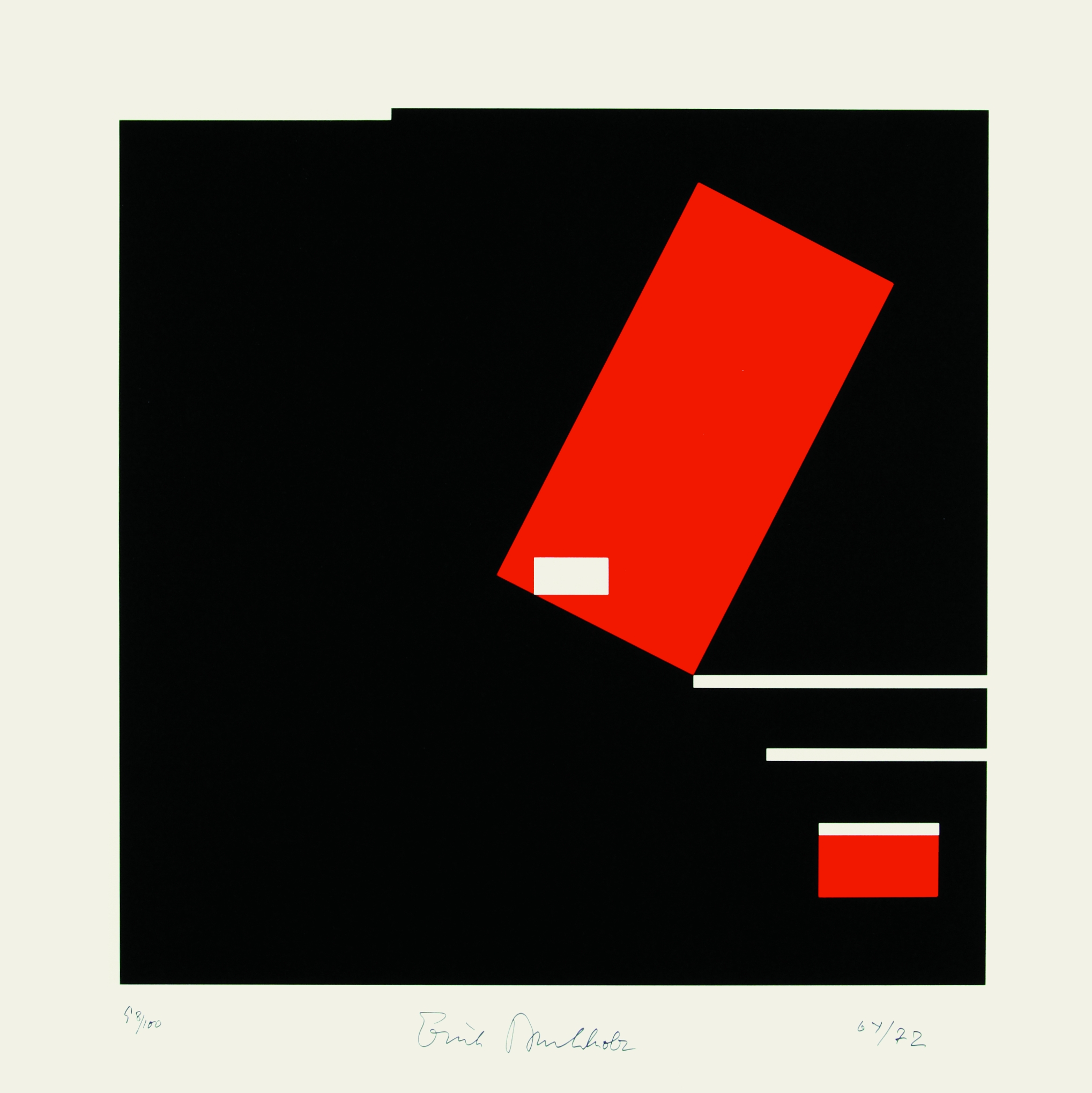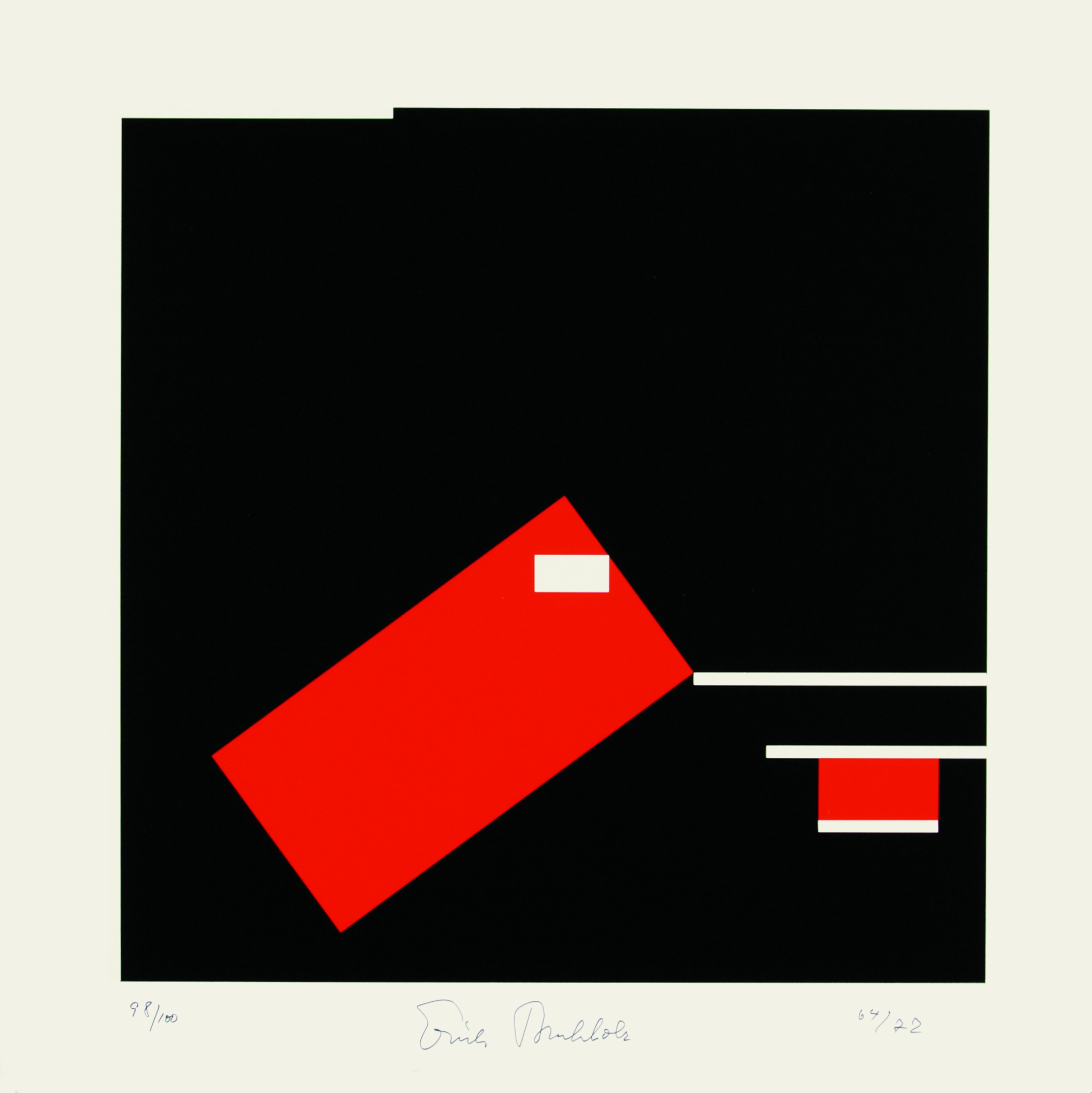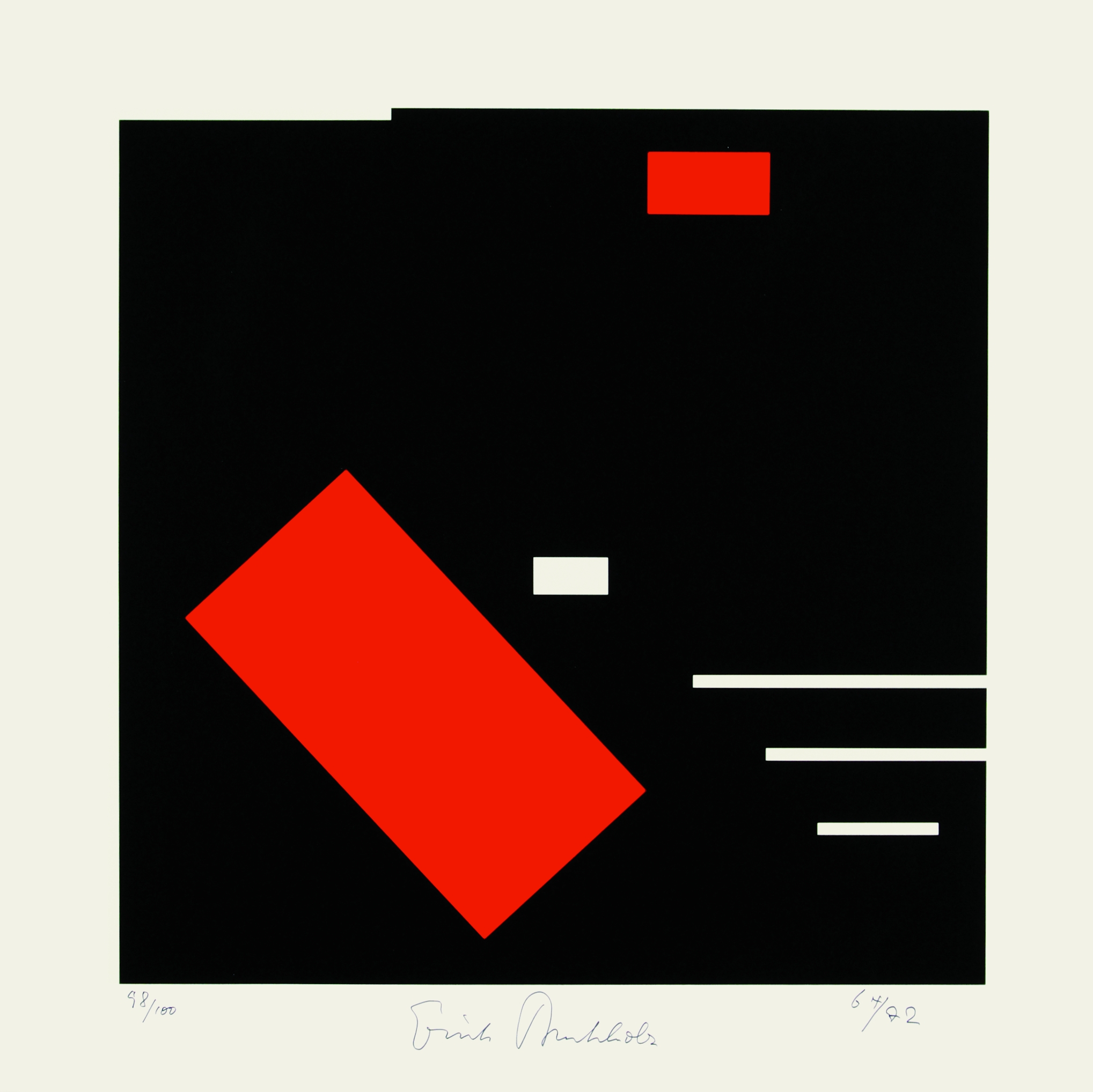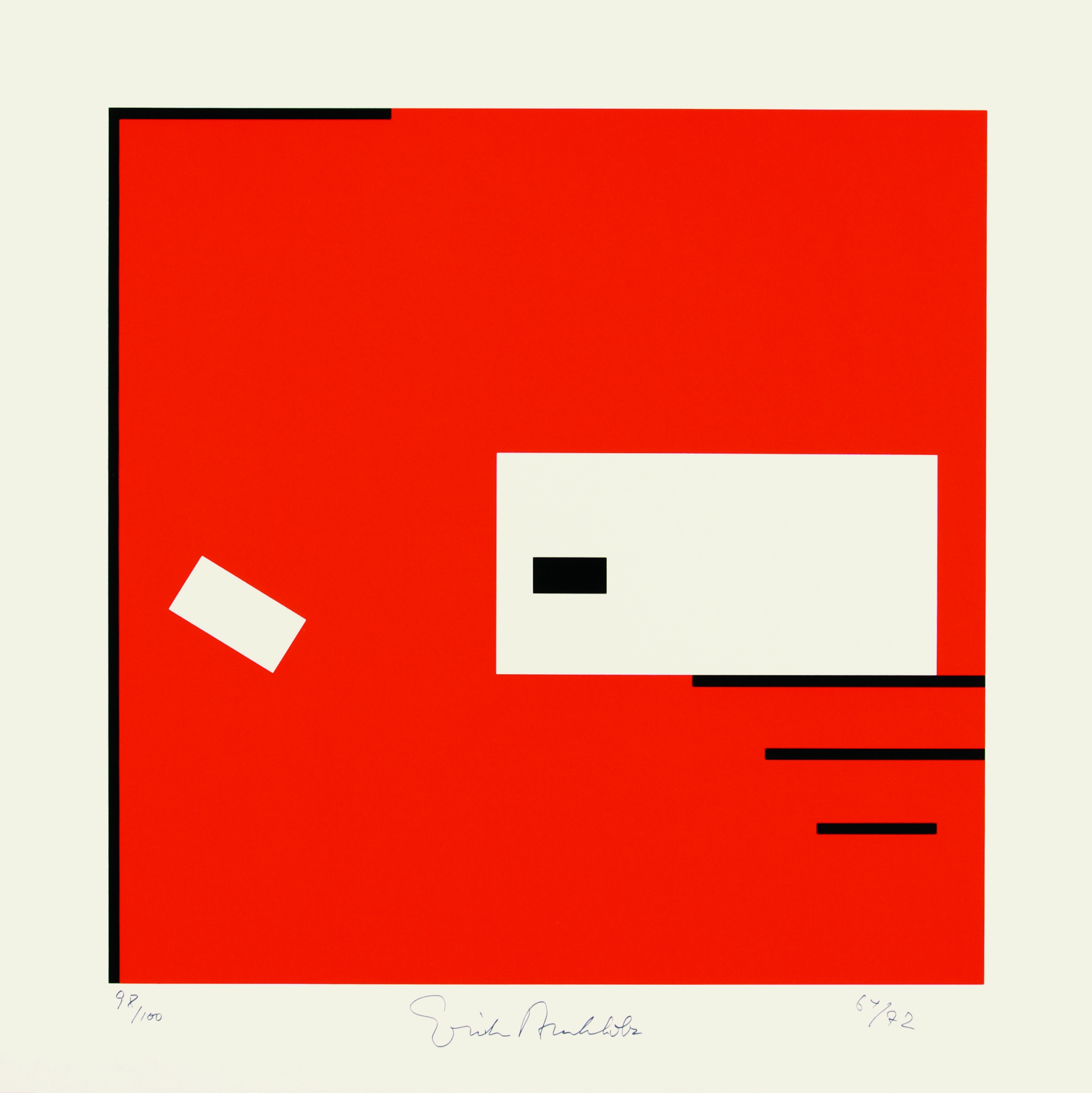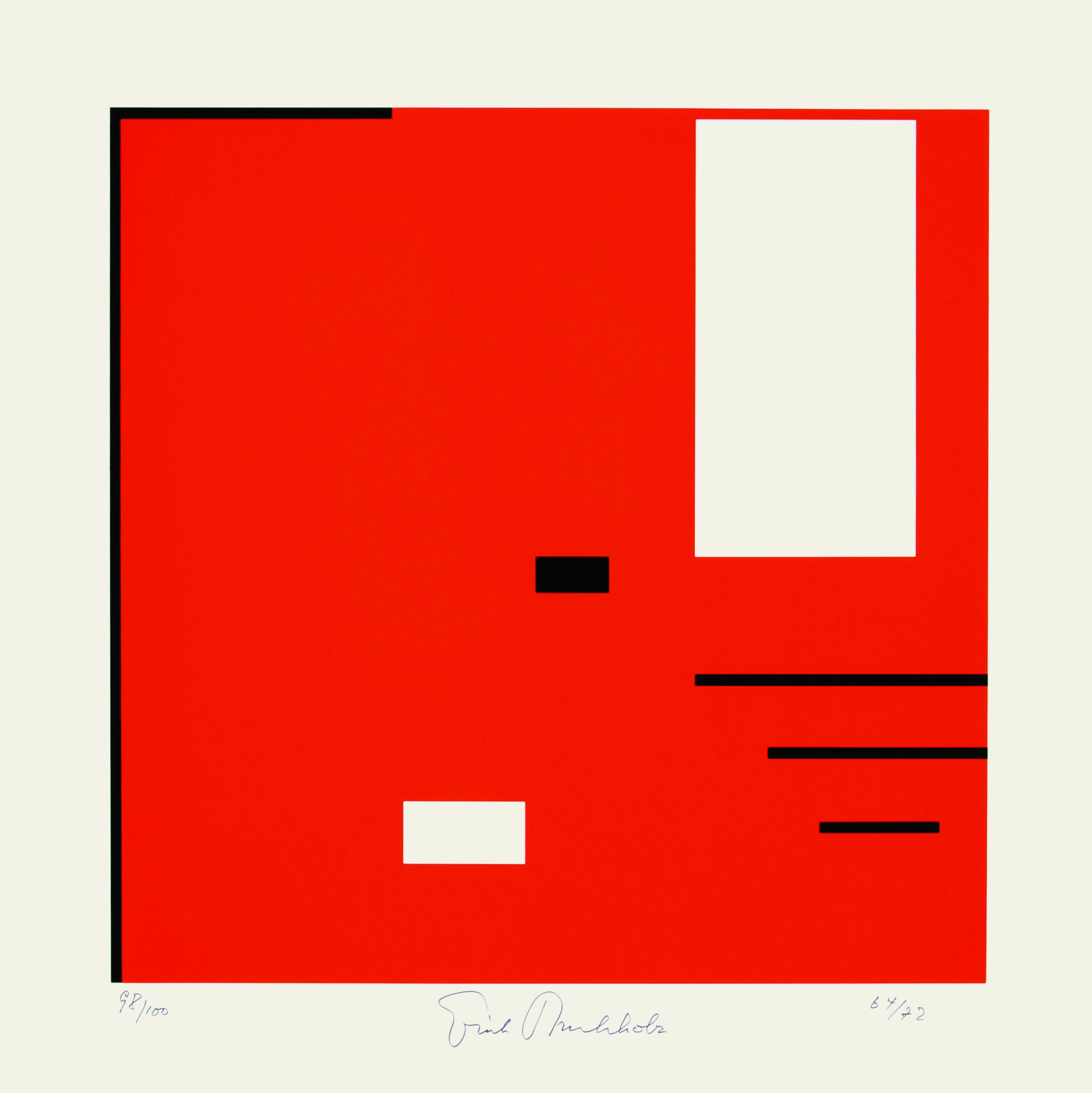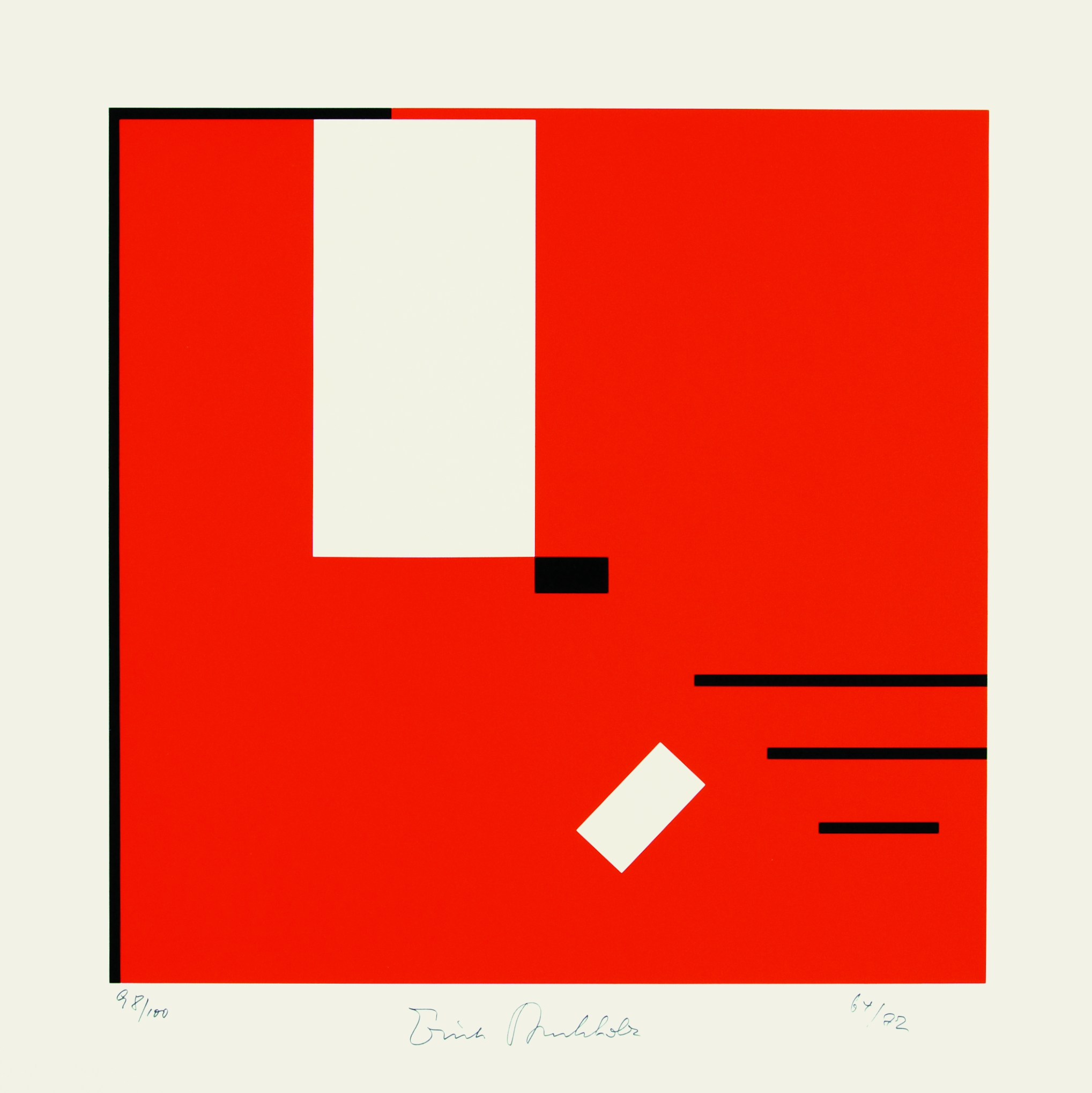Folder with six screenprints
Dimensions: 61.5 x 61.5 cm each
Signature, inscriptions, markings: each signed at lower middle, dated at lower right, numbered at lower left
Copy Number: 98/100
Publisher: Edition Hoffmann, Friedberg
Text: Erich Buchholz
Accession Number: 1001036.1–6
Erich Buchholz had already acquired the foundations of his artistic work in the 1920s, when he became acquainted with the principles of Constructivism, the De Stijl Group and Russian Suprematism. However, as a painter he separated himself from the orthodox program of these pre-war art movements and developed an abstraction without any reference. On the basis of the constructive principles of art on the one hand and an expanded view of life and the world on the other, he wanted to accommodate a paradigm shift, which is also expressed by the title of this series Constants - Variables. The interplay of rationally defined principles and spontaneously intuitive impulses has characterized his art ever since. He saw the eternal law of recurrence confronted with the law of eternal non-recurrence.1
In the 1960s, Erich Buchholz began to translate earlier drawings and sketches into print.2 The work presented here is a series based on the interplay of constants and variables. The six compositions contain geometric shapes in the colors red, black and white. In all the sheets, the number and shapes of the different elements coincide. Two groups of three are separated by the primary colors red and black. Three horizontal lines and a central transverse rectangle, black and white respectively, are fixed on the square surface of each sheet. The three lines in the lower right quarter of the picture surface are equally spaced one above the other, extend upwards and lead the eye to the center of the picture. There, the small cross rectangles at the same height in all six sheets result in a constant fixed point in black or white. As variables, distributed differently from sheet to sheet, a large and a small rectangle are added, arranged crosswise, lengthwise or diagonally. These movable elements have the same color in each row.
In the system of coloration, Buchholz has realized two of three possible variations; with regard to the composition of the basic forms, countless other possibilities are conceivable. The constant and variable elements of the picture form the repertoire.
In the words of the philosopher Karl Jaspers, who was a contemporary of Erich Buchholz, it can be said: "The constant has no true height. This comes only to the upsurge of the moment. "3
Sven Künzel
1 Vgl. Kat. der Ausst. Erich Buchholz. Zeichnungen, Plastik, Ölbilder, Aquarelle. Kunstverein Braunschweig 1961, S. 12.
2 Kat. der Ausst. Erich Buchholz. Graphik, Malerei, Relief, Architektur, Typographie, hrsg. v. Richard W. Gassen, Lida von Mengden, Wilhelm-Hack-Museum Ludwigshafen am Rhein, Köln 1998.
3 Karl Jaspers, Psychologie der Weltanschauungen, München 1985, S. 156
